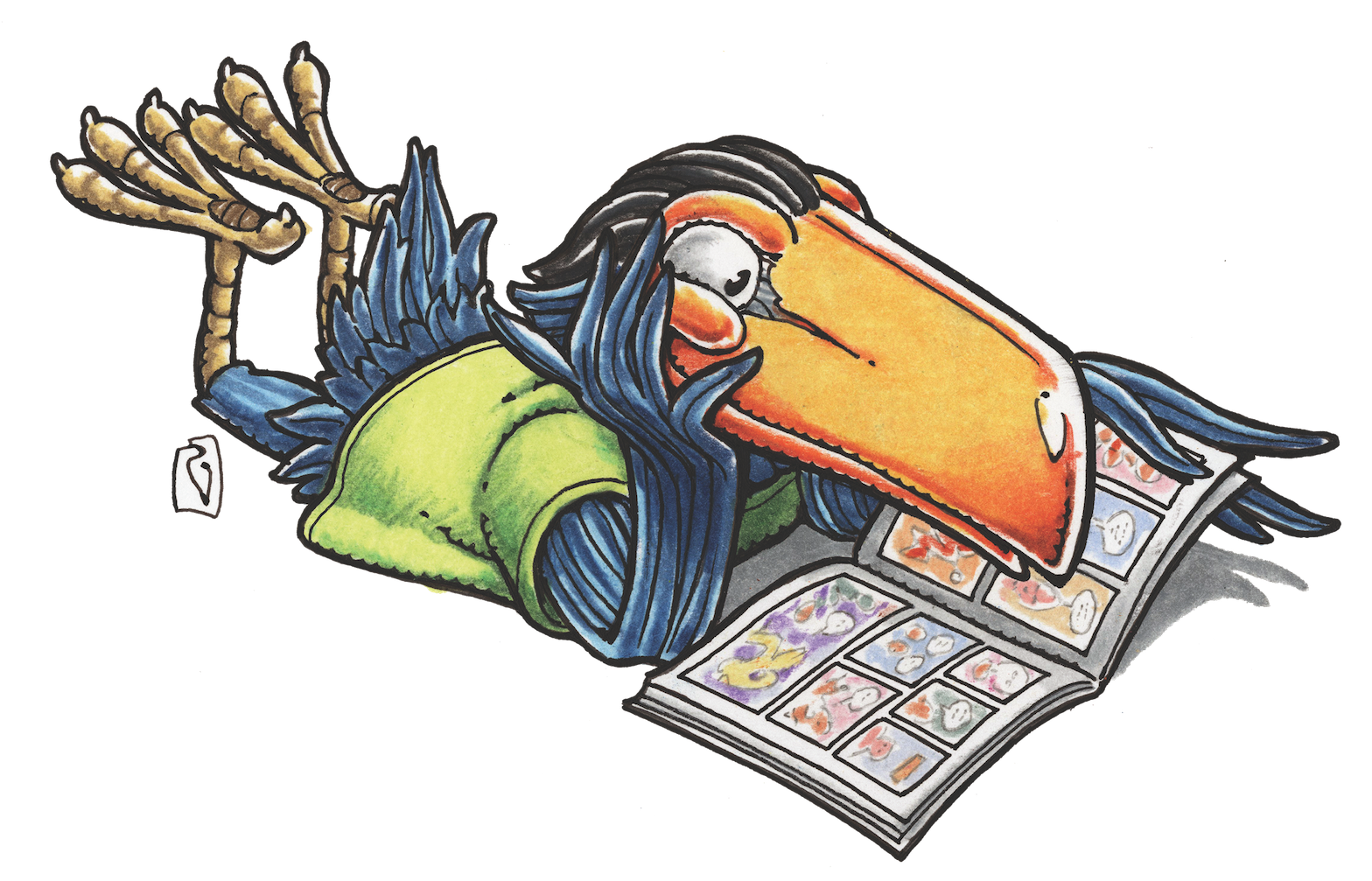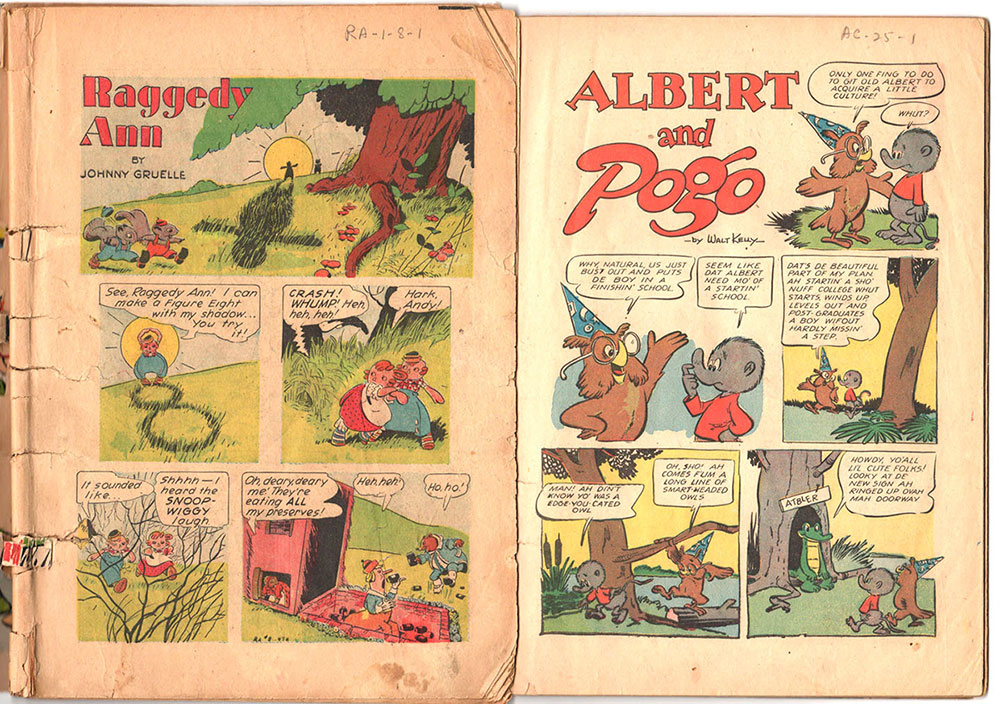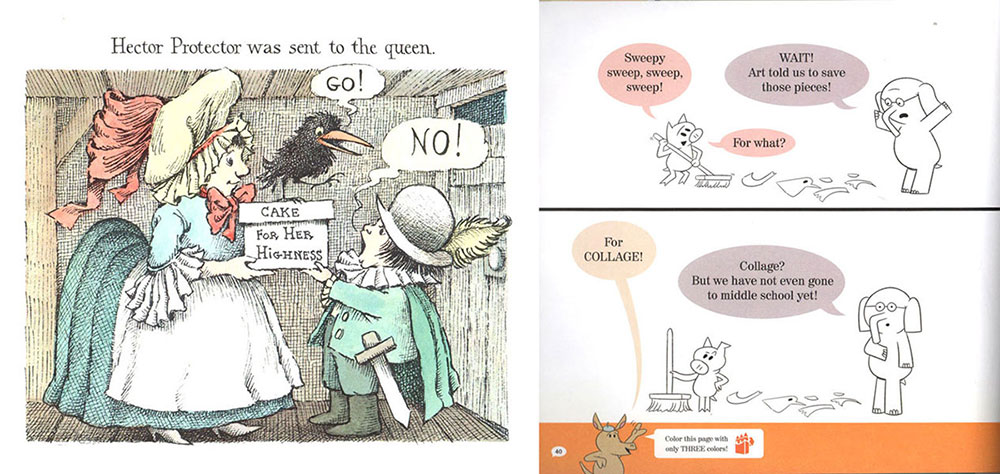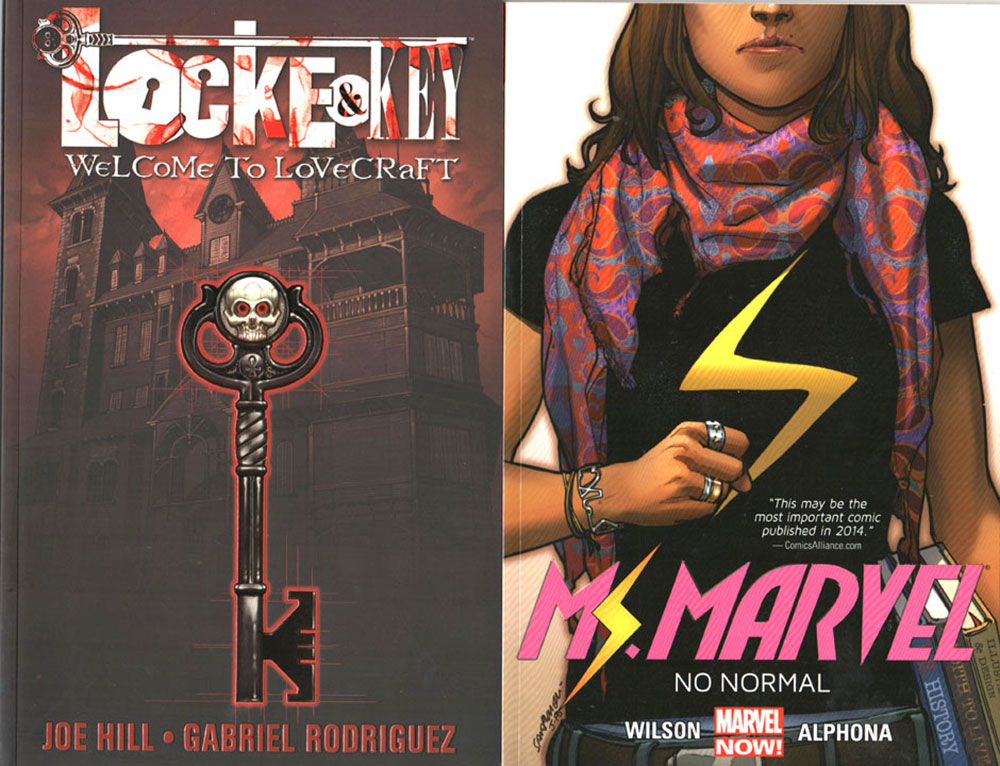MAGGIE’S WORLD BY MAGGIE THOMPSON
Maggie’s World 057: Take Another Look

On November 18, 2017, Tony Isabella noted, “On this date in 1985, Calvin and Hobbes, a comic strip by Bill Watterson that was at its height one of the most popular in the world, was first published. It is my favorite comic strip of all time and, every three years, I read it from start to finish.”
Rereading.
That was the tricky part of loving comic books and comic strips years ago. Not only did you have to buy them as soon as they went on sale, you also had to hold onto them forever, if you ever wanted to follow the story again. It was even worse for fans of comic strips, who usually had to resort to clipping them out of newspapers and then storing them in some sort of file or scrapbook. (Mom and Dad clipped and pasted Pogo and Peanuts strips from their respective newspaper beginnings.)
But rereading made me a comics collector.

An Early Challenge
As collectors, we’d buy missing issues whenever we came across them. In some cases, that meant that we weren’t able to reread them in order until years after we’d begun to collect them. (It was only when we’d accumulated the complete file of Dell’s Our Gang comic books that Don and I realized that writer-artist Walt Kelly had aged the movie-originated kids in real time—eventually even adding younger characters to the cast, as the original gang entered high school.
Heck, when I was buying issues from the newsstand, I’d frequently go back to read earlier issues in sequence before I settled down to read the current release.
How many comics readers do that these days?

Today’s Most-Reread Comics
My guess is that the most comic books that are savored to the point of memorization have been picture books. (I’m still being rigorous in my definition. To be a comic book, a story should have panels and speech balloons. But there are comic books for those beginning readers.)
I can still recite most of Maurice Sendak’s Where the Wild Things Are from memory. But that wasn’t a comic book. On the other hand, his Hector Protector and As I Went over the Water and Some Swell Pup employ panels and word balloons and are clearly comics.
Mo Willems’ kids’ books—yeah, the same. And I’ll bet many of today’s kids not only reread them; I’ll bet they’ve memorized them. (Hey, I’ll even bet the same goes for the adults who read the books to those kids.)

And …
Today’s comic-book readers are finally able to take it almost for granted that they’ll be able to revisit stories when they choose. Captivated by (for example) the character of Jessica Jones, readers can track down the contents of the Marvel “MAX” issue Alias #1 by Brian Michael Bendis and Michael Gaydos, even though it was dated November 2001. They can compare and contrast her comic book appearance with the TV version and evaluate the adaptation.
In the meantime, it’s now a pretty simple matter for readers to do what I used to do: They can pull out previous installments and savor the latest issue only after they’ve reread the story to that point. Considering the wealth of reprint volumes, today’s readers can revisit tales from years—even decades—past.
Among the advantages of all this is that such explorations are sheer entertainment—because that’s precisely what the original publications set out to do: entertain readers to keep them coming back for more.
So, yes, we’re spoiled today. Young whippersnappers (get off my lawn!) might find it surprising to appreciate just how little information was available years ago. Trade paperbacks now abound. Everything seems to be in perpetual print. All of which means we can reread whatever we choose as often as we like. Heck, libraries maintain comics collections (a fact that can be pretty stunning to old-timers).
Still Waiting
Mark Evanier has now held in his hands the volume of Fantagraphics’ Pogo strip reprints that Carolyn Kelly, he, and I labored over, even as she was dying. Her commitment to the project that preserves Walt Kelly’s genius stands as a symbol of what is being done to bring new readers to entertainment produced long ago. That Pogo project continues, thanks to her design and intentions, even after she has left us.
I said that everything seems to be in perpetual print. Nevertheless, there are reprints-to-be that are still waiting for even a beginning to compilation. Ed Wheelan (1888-1966) was a cartoonist of whom Don and I knew little when we began to collect. His mother (as I later discovered) was Albertine Randall Wheelan (1863-1954), herself a cartoonist, and Ed became a friend, thanks to contact from contributors to our Comic Art fanzine. We were delighted to see samples of the ground-breaking and captivating strip that he produced in the 1920s and 1930s. Comic-book fans saw his work in Golden Age Flash Comics and Fat and Slat, but most of his accomplishments have seldom been available to later readers. There have been a couple of brief efforts to reprint them—most notably a 1977 Hyperion Press reprint of 1927-1928 strips—but that’s about it.
Which is to say that, even as many reprint volumes of comic books and comic strips abound, there are more delights to uncover.
And more new comics await future reprints.
After all, it’s always wonderful to enjoy, not only the thrill of first-time discovery, but also the savoring of re-appreciation that comes from noticing how a story and its characters have been developed, now that we know where they are going.
Maggie’s World by Maggie Thompson, appears the first Tuesday of every month here on Toucan!